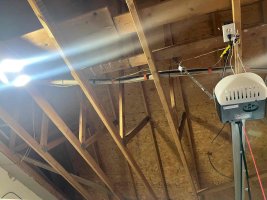Have you seen this before?
Garage with panel, house circuit wires run across the top of the ceiling and enter the main house structure, zip tied and taped. Is this a common practice? I have seen plumbing J-hooks used to cradle circuit runs before and seen the circuit the runs raying in a fur-down cover duct work in a garage ceiling.
Any code section that prohibits this?

Garage with panel, house circuit wires run across the top of the ceiling and enter the main house structure, zip tied and taped. Is this a common practice? I have seen plumbing J-hooks used to cradle circuit runs before and seen the circuit the runs raying in a fur-down cover duct work in a garage ceiling.
Any code section that prohibits this?


